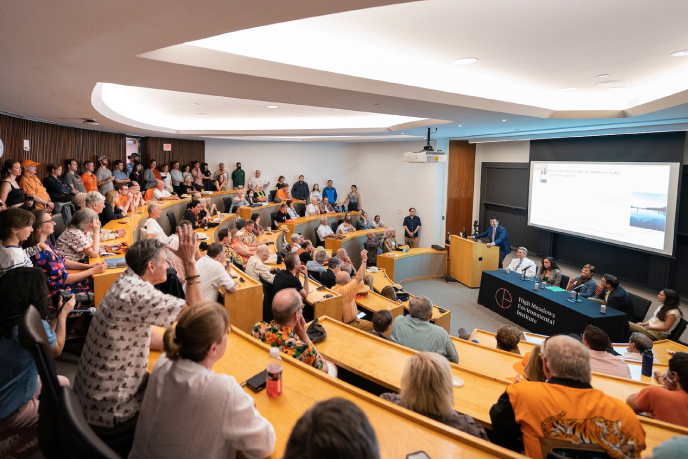Ariana Di Landro ’25


Ecology and Evolutionary Biology
Mechanism of Shrubification in a Changing Arctic
Certificate(s): Environmental Studies
I observed how different drivers such as warming, nutrient availability and a longer growing season impact shrub expansion or “shrubification“ across the Arctic, focusing on three species: Betula nana (dwarf birch), Salix sp. (dwarf willow) and Alnus viridis (green alder). Other research has observed that these shrubs are expanding across the Arctic, but with no clear explanation for how and why. Understanding the mechanisms of shrubification is critical in understanding how shrubs impact carbon cycling. I tracked the shrubs’ phenological or developmental changes in summer and fall, for example buds breaking, leafing out and senescence. I also helped set up boardwalks for easier access to plots and to limit the destruction of the tundra, and I assisted in taking soil cores to determine how nutrient addition has influenced the composition of the soil. While learning about plants for the first time and learning to identify them was challenging, it was extremely rewarding to look at the tundra at the end of the summer and be able to identify most of the species below me. I have gained an appreciation for the Arctic’s uniqueness as I gained experience in botany, phenological measurements, biogeochemical skills and data analysis.
2023
Climate and Environmental Science
Levine Lab, Department of Ecology and Evolutionary Biology, Princeton University - Toolik Field Station, Fairbanks, Alaska
Jonathan Levine, J.N. Allison Professor in Environmental Studies, Professor of Ecology and Evolutionary Biology; Ruby An, Ph.D. candidate, Ecology and Evolutionary Biology



